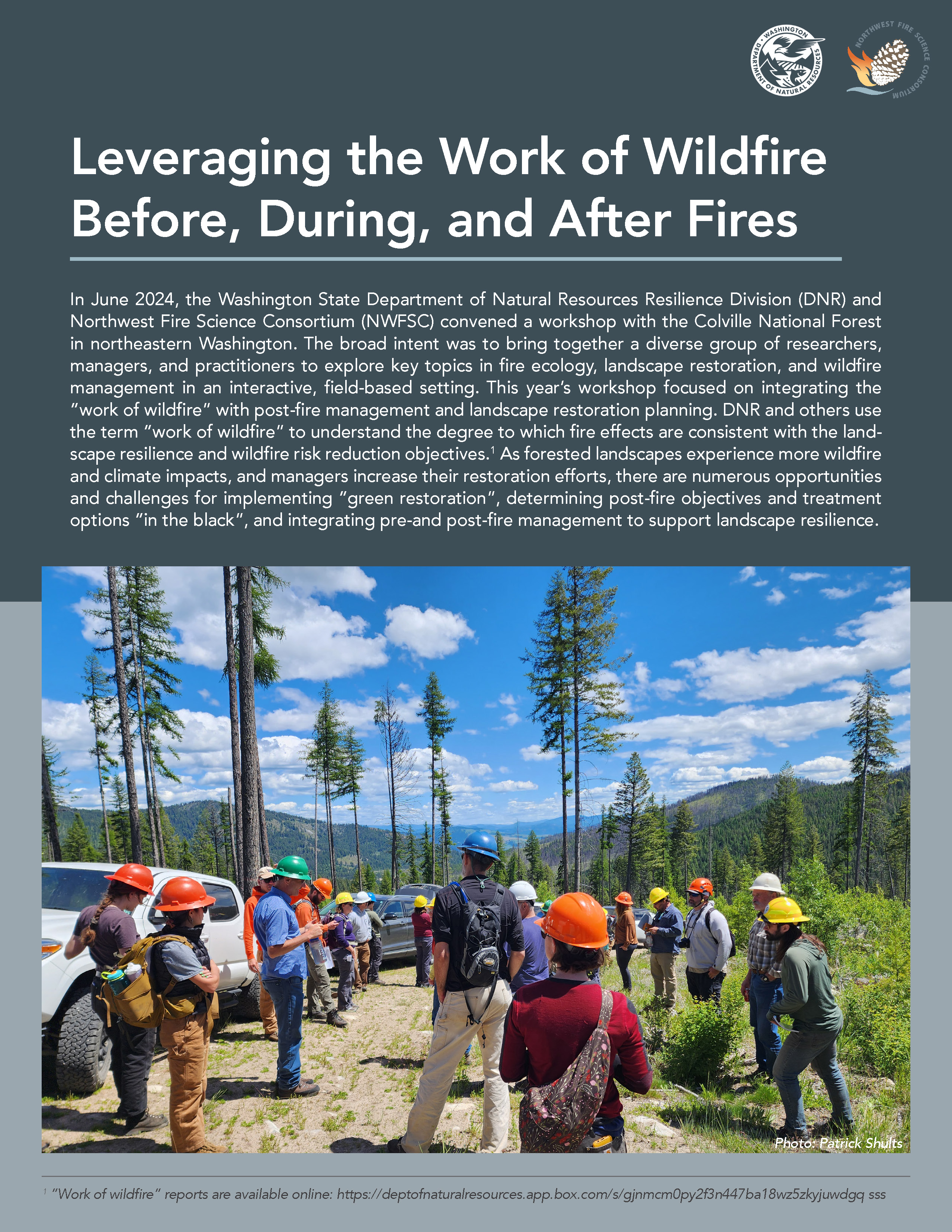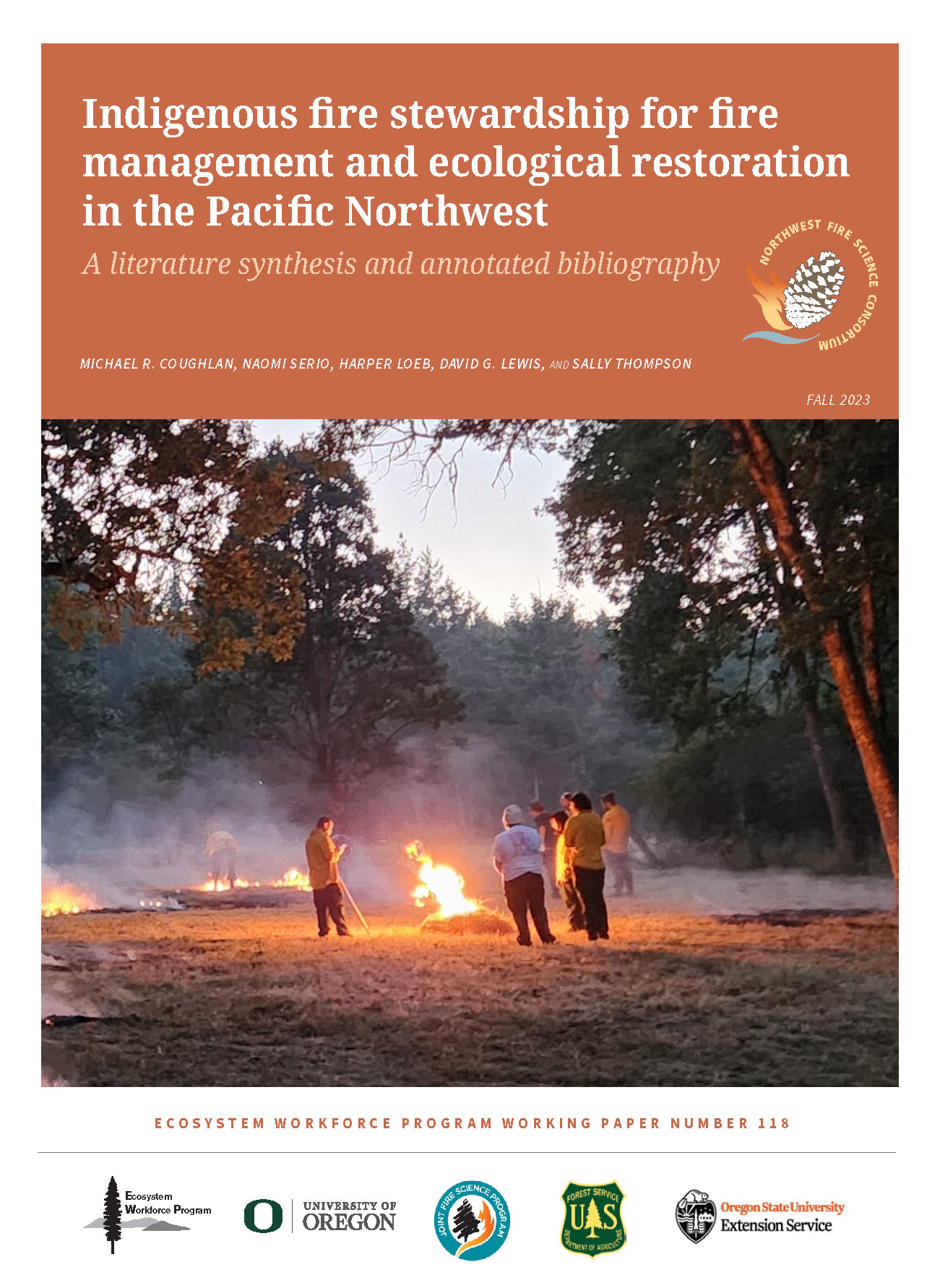Revive the Future: Transforming Post Wildfire Recovery in the NW
We recently partnered with Washington State Department of Natural Resources to host this webinar series to investigate how we can collectively and most effectively recover, reforest, and seek resilience after significant wildfires. Topics included science and management of debris flows, diverse community recovery pathways, restoration infrastructure with new patterns of runoff, reforestation and replanting access, and recreation after wildfires.
See the recordings playlist
Upcoming Events
Announcements
Welcome to our website!
We are glad you are here! Please take a look around and let us know if something is not working properly.
Work of Wildfire field workshop highlights:
 In June, NWFSC & WA State DNR convened a workshop with the Colville National Forest to explore key topics in fire ecology, landscape restoration, & wildfire management in an interactive, field-based setting.
In June, NWFSC & WA State DNR convened a workshop with the Colville National Forest to explore key topics in fire ecology, landscape restoration, & wildfire management in an interactive, field-based setting.
Learn more & download
New Research Brief:
Fire in the Heart of the Oregon Cascades
Find it HERE
New Synthesis:
Indigenous Fire Stewardship For Fire Management And Ecological Restoration In The Pacific Northwest: A Literature Synthesis And Annotated Bibliography.
Find it HERE

